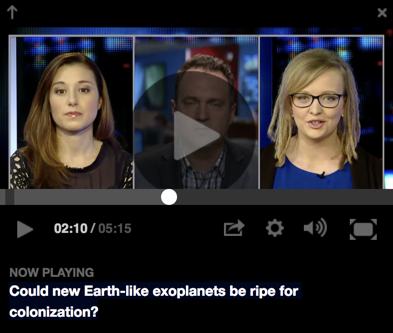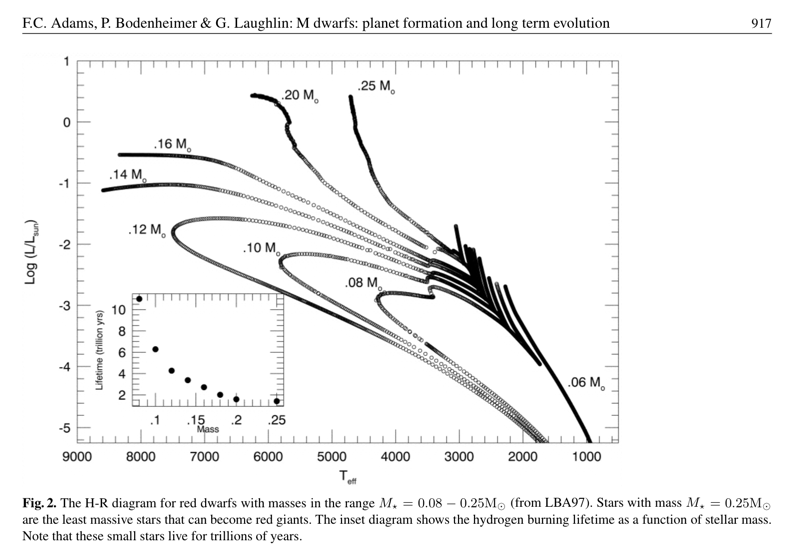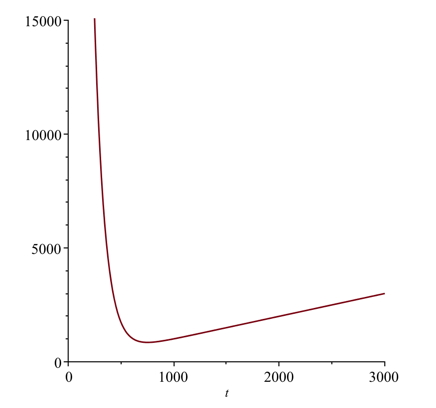TRAPPIST-1 is probably not alive
Quick overview
- It was recently announced that a nearby star, TRAPPIST-1, has been found to have additional planets (some were discovered prior to this study) which exist in a potentially life-hosting region around the star.
- [OLD TEXT] Astronomically speaking, TRAPPIST-1 is pretty close to us and thus if it does host life then it will be a promising candidate for spectrographic evidence. [SEE UPDATE ABOVE]
- [OLD TEXT] However, the nature of the star and the configuration of the planets means that there are some good reasons to be skeptical that any of those planets do host life. [SEE UPDATE ABOVE]
- Also, it is practically impossible with our current technology to visit that system with unmanned probes, let alone (hu)maned missions.
- The distances in space are so vast and the restrictions that the laws of Physics place on space travel are so stringent that we would probably have to completely exploit our entire planet’s resources to even have a chance to visit that solar system within 10,000 years.
- We are probably not alone in the universe, but we are also probably very, very rare, and we likely won’t meet any alien intelligence before we go extinct.
Deeper Dive
An article published in the science journale Nature (Gillon et al., Nature, 542, February 23, 2017) made many mainstream media headlines by announcing the discovery of new terestrial planets around a nearby star. CNN was pretty tame by announcing that Astronomers discover 7 Earth-sized planets orbiting nearby star in their headline. The New York Times was equally tame in announcing that 7 Earth-Size Planets Orbit Dwarf Star, NASA and European Astronomers Say. NBC went a little louder with the headline Living on the TRAPPIST-1 Planets Would Be Very Strange, which, let’s be clear, suggest to the average reader that those planets are in fact habitable, which is not confirmed yet (more on that soon). CNET was bolder with a headline ‘Incredible’ star system could host life, but the “could” was a good word to use though it spoke nothing to the actual probability. I could win the lottery and get struck down by lightening and then a meteor could hit the ambulance carrying me to the hospital, but I’m not going to bet on it. The UK Telegraph pushed it a bit further with the headline Nasa discovers new solar system TRAPPIST-1 - where life may have evolved on three planets. The Guardian asked is there life on exoplanets orbiting Trappist-1?
Even Fox News got in on the fun by asking a science reporter whether this was “just a big deal or a way to get the general public interseted in space exploration to insure that it’s properly funded…?” in a video with the title “Could New Earth-like Planets Be Ripe for Colonization?”

For the record, I don’t have an issue with those headlines, as if that would matter anyway. I’m even a bit fond of that creative website that some planetary scientist have put up to host information and fan fiction related to TRAPPIST-1. The more public interest they can drum up for their work, the more grant money that will flow towards planetary and exoplanetary science.
However, let’s bring this discussion back down to Earth for a moment.
Some background on TRAPPIST-1
TRAPPIST-1 is a very small and relatively cold star that is about 40 light-years away from our solar system. TRAPPIST-1’s radial velocity is 56.3 km/s towards us, which isn’t very fast. For example, the Juno spacecraft’s maximum speed was about 73.6 km/s. The fastest speed of a (hu)manned spacecraft was achieved by Apollo 10 at about 11.08 km/s.
TRAPPIST-1 is so dim you can’t see it without a strong telescope.
Two things are interesting about science’s findings on exoplanets so far:
-
it is pretty common for a star to have planets (just a few decades ago this wasn’t an accepted reality);
-
and our solar system seems to be a bit of an outlier in terms of the configuration of planets around the star based on what we’ve seen so far.
Many of these expoplanetary systems have Jupiter sized or larger planets in very close orbit around their star; in the case of TRAPPIST-1, the star is much much weaker than the sun and all the planets we’ve found are in a very close tight orbits.
These findings about how unusual our solar system’s configuration is may be due to selection bias, i.e. it is easier to find planets around a star when the planets are large and very close to that star, because the motion (or dip in luminosity) of the star is more strongly affected by larger closely oribting planets (for Doppler-effect discovered planets and also the luminosity detection method). However, as our ability to detect smaller and smaller exoplanets has improved, these findings are mostly holding up. Our solar system is weird. [UPDATE Aug 5 2022] Scientists are finding a few out there that somewhat resemble our own).
Why we are excited about this discovery
- Three of the planets are believed to be capable of hosting liquid water oceans. Having liquid water oceans vastly increases the chances a planet could host life.
- Ultracool stars, which TRAPPIST-1 is classified as, are the most common type of stars in our galaxy. The fact that TRAPPIST-1 has so many planets and so many planets that are within the potentially habitable zone bodes well for our chances of finding life-hosting exoplanets if the negatives in the next section aren’t enough to stop life from evolving.
- Because the stars are so small, it is easier to see the dip in light which an Earth-sized planet would cause if it passes between us and TRAPPIST-1. TRAPPIST-1’s solar system’s orbital plane happens to be position just right for us to see these planets crossing the star; random chance says that only a ver small percentage of solar systems would yield this lucky result. However, because ultracool stars are so common, the odds are in our favor that we will continue to discover similar systems.
Why we shouldn’t be too excited about this discovery
-
The planets are probably tidally locked or near tidally locked and suffer run-away green house effects. One side of planet always faces the sun, the other always faces dark space. The resulting temperature differential would result in massive global winds if the planets retain their atmospheres. There is still a lot of debate about where the habitable zone is for tidally locked systems, and the predictions that three of these planets exist in the “Goldilocks zone” are not settled science.
-
As the director of the Carl Sagan Institute, Lisa Kaltenegger, points out, these planets are incredibly close to their star and their star could be emitting intense levels of ultraviolet light. UV radiation is dangerous for life as we know it, so in order to host light the planets would need some very serious ozone protection. Alternatively, assuming they had oceans, and that their oceans didn’t boil away or freeze over, life would probably be limited to deep oceans.
-
Ultracool dwarfs are often violent stars with massive flares. However, TRAPPIST-1 is relatively peaceful, according to some of the reports. [UPDATE AUG 10 2021]: See also the above update which suggests that these stars may not be as deadly via flares as originally thought.
-
They may possibly have lost their atmospheres due to being so close to the star.
-
It is only about 500 million years old, so there hasn’t been much time for life to evolve even if the above issues didn’t prevent said evolution. These stars, unlike ours, can hypothetically last for trillions of years since they burn their hydrogen fuel much more slowly than larger stars:

Even if some of oceans remain and are frozen over, that doesn’t rule out life.
Some of the moons in our solar system have frozen oceans of water where there is a suspected liquid layer underneath that could possible host life (e.g. Europa), which is why NASA has an interest in looking for potential life on Europa. And while the conditions of the TRAPPIST-1 system may support some form of life but like with the potential of Europa, the ability for complex life to develop is highly limited due to lack of resources in that given scenario.
Life is robust under the right conditions, but also quite fragile. Earth went through many periods of mass extinctions, a few of which brought life to the very edge. If any of the planets around TRAPPIST-1 have life, they are probably relegated to small regions in the twilight zones (that is, if one side always faces the star and the other always faces empty space, the part of the planet between these two zones would be in permanent twilight and have the mildest climates if the planets still have their atmospheres) making life on those planets much more vulnerable to total extinction, a fate Earth avoided in part due to being almost entirely habitable and thus having a more diverse biosphere.
Sobering Conclusions
Forty lightyears is a long way away. Apollo 10’s max speed was around 11082.5 m/s which is the fastest manned craft speed we’ve ever obtained. That’s slower than how fast TRAPPIST-1 is moving toward us. 40 light years is 3.784e+17 meters away. If Apollo 10 went directly towards TRAPPIST-1 at its maximum obtained speed, it would close the distance at a rate of about 67082.5 m/s (the sum of its speed relative to Earth and the speed of TRAPPIST-1 relative to Earth using Galilean Relativity, these speeds are too slow to justify using Einstein’s Relativity). It would take Apollo 10 approximately 5.6408154e+12 seconds to make it to TRAPPIST-1. That’s nearly 178,846 years. Rocket technology hasn’t changed radically since then. And, of course, the astronauts wouldn’t live long enough to get even a tiny fraction of the way there.
Even if the entire world turned all of their defense spending towards producing a Generation ship to reach TRAPPIST-1 and impoverished the planet’s resources to supply fuel and food supplies for said ship, we are still talking many tens of thousands of years at best, ignoring all threats to human life such as radiation, collision with stray objects, etc (UPDATE Aug 5, 2022: PBS Spacetime has a great video talking about a recent paper which studies the plausibility of traveling at high speeds through the interstellar medium and suggests that it is technologically possible to do so and survive).
A key element that many futurologists who think about generational ships skip out on is the sociological element. One could easily imagine that within a few generations, the community on the generational ship would lose faith in their great-grandparent’s mission and turn the ship around, assuming they had enough fuel to do so. It is likely they would, as they would have to have some breaking capacity once they reach TRAPPIST-1, and then enough fuel to escape TRAPPIST-1’s gravity well. The sociological angle makes this dream far less likely than it already was.
Science fiction has sparked our imagination of traveling to the stars, but the cold reality is that while there is probably a lot of life off Earth in this Universe, everybody is trapped in their own solar systems by relativity and the vast distances between stars. Also, Earth is about 4.5 billion years old and we have about another few billion years until our sun eats its inner planets; who knows what can happen in those billions of years. Keep in mind that human-level intelligence is probably very rare in any case. Some scientist have proposed based on genetic evidence that at one point about 75,000 years ago the human species was once reduced to 3,000 - 10,000 individuals due to climate catastrophes. If this is true (and not all scientist think it is), then we were once very close to extinction. Earth was very close to losing its human population, becoming a wild planet whose greatest intelligence might be the non-human apes that survive today. Not only must a planet have the right conditions for life, it must also have the right conditions for complex life, and even then, it’s going to take some luck to get to a human-like intelligence.
So we (complex intelligent life) are probably not alone, but we are also probably very, very rare, and we likely won’t meet any alien intelligence before we go extinct, given all the odds as we know them today (or as I know them today, hope I’m wrong!).
Coda
In regards to the discussion above on generation ships, there is something related to that known as the Wait Calculation (A. Kennedy, Interstellar Travel: The Wait Calculation and the Incentive Trap of Progress, JBIS 59, July 2006) which is relevant beyond the concept of a generation ship.
From the abstract:
This paper describes an incentive trap of growth that shows that civilisations may delay interstellar exploration as long as voyagers have the reasonable expectation that whenever they set out growth will continue to progress and find quicker means of travel, overtaking them to reach and colonise the destination before they do. This paper analyses the voyagers’ wait calculation, using the example of a trip to Barnard’s Star, and finds a surprising minimum to time to destination at a given rate of growth that affects the expansion of all civilisations. Using simple equations of growth, it can be shown that there is a time where the negative incentive to travel turns positive and where departures will beat departures made at all other times. Waiting for fear future technology will make a journey redundant is irrational since it can be shown that if growth rates alter then leaving earlier may be a better option. It considers that while growth is resilient and may follow surprising avenues, a future discovery producing a quantum leap in travel technology that justifies waiting is unlikely.
Kennedy derives a Wait Equation: “The wait equation describes … the point at which the negative incentive to leave changes to a positive one; where the incentive to set out on the interstellar journey is the strongest.”
The equation assumes that the growth rate of the speed of the potential ship per year is tied to the general global GDP growth rate:
$$ v(t) = v_0 (1 + r)^t$$
where $v$ is the velocity $t$ years after the velocity is $v_0$ and $r$ is the average growth rate year over year. Since velocity is inversely proportional to the time it would take to reach the star, we can rewrite this as
$$ \frac{T_0}{T} = (1+r)^t $$
where $T$ is the time it would take if we waited $t$ years for technology to evolve, and $T_0$ is the time to take if we were to launch with today’s current technology. The purpose of the Wait Equation is to find the sweet spot for launching such that to wait any longer would not return any advantage.
We seek, then, the condition for which:
$$ t + \frac{T_0}{(1+r)^t} $$
reaches a minimum. Using our previous rough estimate of 178,846 years for Apollo 10 to reach TRAPPIST-1 and a growth rate of 1%, we see that this minimum would happen about seven centuries from now.

The implication, if you accept the premises of this equation, is that to ensure that the generation ship we launch won’t be beat to the destination by a faster model, we should wait about 700 years to launch.
A word of warning, of course. This model is entirely unrealistic. It would predict that we exceed the speed of light with our technology in a little over 1000 years:

So let’s in no way see this as a valid physical prediction. Instead, let’s see it as sort of a conceptual starting point for a discussion about “the incentive trap of progress.” I’ll revisit the Wait Equation again in some future blog post (probably) because it has applications elsewhere. For example, it might help us understand why it may be better to avoid getting a first or even second or third generation product. If you buy a first generation product and you don’t have a budget such that you can buy an upgraded product for many years ahead, then you will suffer a poorer quality product than you might if you waited a year or two for the next iterations of that product to improve. However, if you wait too long, you also harm yourself by denying yourself access to that product, and waiting too long means that the net harm to yourself could exceed the harm of buying too early.
Indeed, that’s a potentially awesome post so let’s plan to discuss it again soon.